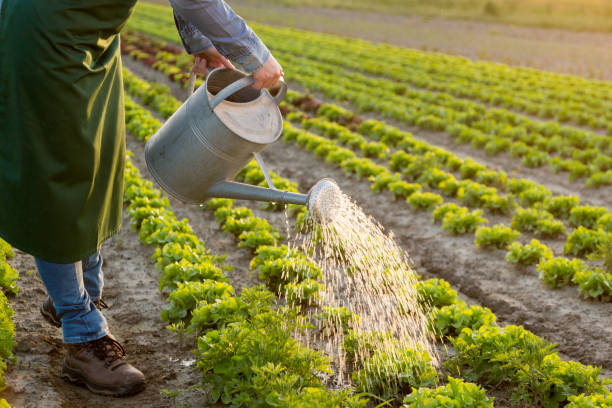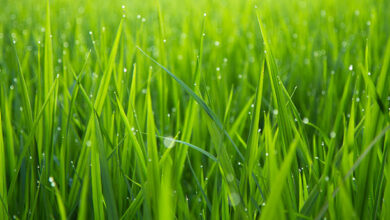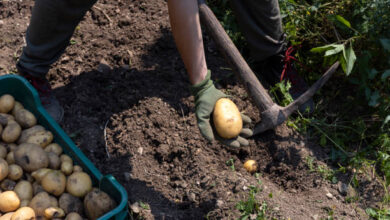
When to water plants
When to water plants? It’s hot, we have plants in the garden or on the balcony that we would like to see survive… Maybe they will even have to put up with a few days of absence for (well-deserved!) vacation. When is the best time to water? How to do it effectively? How much?
- When?
Every day?
It is better to water not too often, but abundantly. Daily watering is excessive, and unrelated to the “natural” cycles, which it then disrupts, encouraging the appearance of diseases, impoverishing the soil very quickly…
- Morning or evening?
Watering in the evening is ideal during periods of high heat, as it minimizes evaporation losses that occur during the day.
Morning is best if the nights are cool, and you are worried about night frosts (valid in some regions in the fall).
How to water plants?
The best way is generally “at the neck”, that is to say without forming a “rain” with the hose, or without a “head” with the watering can.
By bringing water directly to the base of the plants, we avoid encouraging the growth of weeds and slugs and we limit the loss of too much water.
Some vegetables, however, appreciate sprinkling; this is the case, for example, with cabbages and salads. And of course, this is the right way to water all your seedlings.
Water requirements
- Plant categories
Watering depends on climatic conditions (dry period, rainy period), the nature of the soil (clayey or sandy, etc.), and the nature of the plants.
Plants can be classified into 3 categories:
- Those that require a lot of water: you will take care to water them as soon as the soil is dry on the surface,
- Those with average needs, which you will water when the soil is dry at a depth of 4/5cm,
- Finally, “dry” plants, which are content with spaced applications, only when the soil is dry to 8/10 cm.
Mistakes to Avoid When Watering Your Garden
Watering a garden is not rocket science, you say to yourself. However, how many amateur gardeners have seen their plants die prematurely due to lack or excess watering… Here is our advice to keep your plants in great shape without causing your water bill to explode:
- Watering more than necessary
Be careful, water should be consumed in moderation for our dear plants! To have perennial vegetation, it is better to water abundantly twice a week , than a little every day. Doing so will encourage the plants to develop their roots in depth and become more resistant.
- Wanting to water everything at all costs
Not only should you avoid becoming a watering fanatic, but you also have to accept the fact that you won’t be able to water everything if you have a large garden. Otherwise, you’ll be shocked when you discover your water consumption… So the rule is: give priority to young shoots and the vegetable garden, which are more water-hungry than any other inhabitant of your outdoor space.
Are you afraid that your lawn will turn yellow? Don’t worry, the lawn will regain its green color with the next rains.
- Water at any time of the day
You thought you would take care of watering in the middle of the day? And yet, it is not the brightest idea you have had! Indeed, when you water in broad daylight, the sun’s rays are stronger and the soil warmer. By watering them in the afternoon, the leaves could burn and the roots would suffer from the temperature difference.
You have certainly already heard the expression “the early bird catches the worm”: you will have understood, the morning is the ideal time to water the plants in the garden. You can also wait until the evening, however taking care of this task shortly after waking up will relieve you of a weight.
- Water only the foliage
A common pitfall for budding gardeners: pouring water on the leaves. Woe betide you, this practice is to be avoided! You should not water the leaves; the worst thing is to only water the leaves.
Be aware that parasites can develop on the foliage, so avoid proliferation by not targeting the leaves when watering. The best practice is to water at the base of the plants: the water will reach the roots much more easily. Of course, don’t forget to hoe the soil so that the water penetrates optimally!
- Ignoring the mulching technique
Do you know about mulching? It is a technique that consists of placing layers of straw on the soil in your garden. This helps to limit the appearance of weeds, while limiting the phenomenon of evaporation
- Water all plants the same way
Not all plants have the same water needs, ask your garden center for advice and keep all the labels when planting. Also pay attention to the type of plants you decide to grow. If your daily life is already busy and you have little time to devote to your outdoor space, you will have to accept it and limit your choice of plants. Don’t worry, there are a multitude of plants that grow without watering!
- Neglecting your plants after an absence
Back home after a few days away, your garden is crying out for help! Remove dead flowers and weeds, water your plants, use fertilizer, and pamper the vegetation to show them that you missed them!
Read Also:
What to plant in July in California: Your California Garden Guide
When to Plant Corn: A Guide to Timing Your Crop for Success
What to Plant in July UK: A Complete Guide
Lipstick Plants: Characteristics, Benefits, and Care Tips
Crape Myrtle Bushes: Planting, Care, and Benefits




